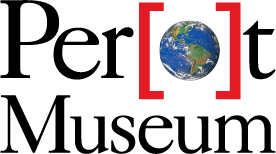
The Building
Yes, it's an exhibit all by itself
Designed by Pritzker Architecture Prize Laureate Thom Mayne, the Perot Museum's building has been called "the boldest piece of modern architecture to hit Dallas" by the Dallas Morning News. The building uses creative design techniques to create a unique and sustainable Dallas icon.
Covid-19 Update
Architecture tours are currently on hiatus. If you have any questions about our architecture, please contact volunteers@perotmuseum.org. One of our specially trained volunteer tour guides can answer your questions.


Go behind the scenes
Find out the design-centered reasons why the escalator only goes up, how the building was made to “float” with custom-designed structural support, and learn how the wildlife on the plinth is a landscaped tour across Texas — and through time — that helps make the Museum eco-friendly.
The Building
- The building contains 248 miles of electric cabling.
- The building contains 950 stairs throughout the campus.
- The building has five floors, 80% of which is public space.
- The building sits on a 4.7 acre site.
- The building is 170 feet tall, equivalent to a 14-story building.
- The building uses structural glass in the lobby that is supported by tensioned cables that hold 100,000 pounds of stress per square inch.
- The building is easily accessible to public transportation including DART and is pedestrian and bike accessible via Katy Trail.
- The building is 180,000 square feet.
Sustainability Facts
- The building’s irrigation and plumbing demands is met in the summer by recapturing air conditioning condensation.
- The building materials include recycled and locally sourced materials.
- The building’s furniture is made from wood taken from sustainable forests.
- The building’s cube shape is more energy efficient than a rectangular building.
- The building’s cafe uses reusable and biodegradable materials.
- The building has light wells in the learning labs that allow natural light to fill to rooms and rely less on artificial lighting.
- The building is located on an optimal site; it’s a former brownfield.
- The building’s water is heated by solar panels.
- The building uses drip irrigation, which is 90% efficient and 75% more efficient than sprinklers.
Our dramatic and iconic escalator
Thom Mayne, our building’s architect, is known for developing layered architecture that eschews the normal bounds of traditional form. Our building features a 54-foot, continuous-flow escalator contained in a 150-foot, glass-enclosed, tube-like structure that dramatically extends outside the building. Unexpected details such as these define Mayne’s style.


At night, the building floats
You’ve probably walked through the first floor and never noticed, but windows comprise the bottom of the cube making the building look like it’s floating. The support columns on this level are designed in the shape of a “V” — which was a challenge for the engineers and local contractors who had never attempted this before.
A roof full of sustainability
Not only is the building’s plinth roof home to drought-tolerant plants that are native to Texas, but it also has a rainwater collection system filling two 25,000-gallon cisterns. You’ll also find skylights that let in natural sunlight for street-level rooms, all contributing to an LEED, Green Globes and Sustainable Sites Initiative green building.


The unique texture of our outer skin
The building is made up of 656 textured precast concrete panels, totaling 69 million pounds. The design intent is to create a series of waves that gives a dynamic effect on the building that changes minute-to-minute through the day with the sunlight and shadows. The texturing is more dense at the bottom of the cube and slowly fades away as the cladding move upwards. This pattern was done intentionally to create a perception that the building dissolves into the sky.
Learn how the wildlife on the plinth is a landscaped tour across Texas
Texas has one of the most diverse landscapes in the country and our building showcases that diversity. From the wooded area leading to the Plaza representing East Texas to the rockier, desert-like landscape on the plinth roof representing West Texas, all across the exterior, you’ll get a feel for the distance ecosystems that claim home in Texas.

Watch the Museum’s Construction


